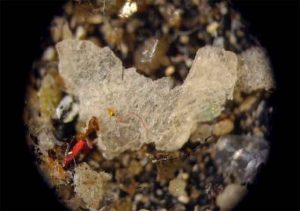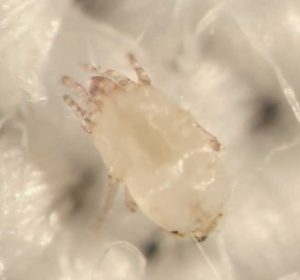Dust Mites 101: What are They & Their Allergies
This article will first introduce what are dust mites, where can you find them, differences between dust mite allergy symptoms and cold symptoms as they might be confused with each other.
What are Dust Mites?
Dust mites are microscopic, 8-legged, translucent insects invisible to the human eye. They live in household dust, some of which is not visible to the human eye.
They feed on flakes of shed human skin cells and pet dander. The average adult human sheds 1 million skin cells a day—enough to feed a million dust mites.
Their length ranges between 0.2-0.3 millimeters (0.008–0.012 in). They live in human habitation and multiply easily in warm (above 21 degrees Celsius or 70 degrees Fahrenheit) and humid places (above 50% humidity) and die when the humidity goes below 50%.
Dust mites don’t drink water, but they suck it from the air. Thus, when the humidity drops below 50%, they die, and when it is above 50%, they multiply.
The below image shows a zoomed human skin flake.

Dust mites are often found in places with a high concentration of shed human skin cells, such as mattresses, pillows, bedding, carpets, upholstered furniture, sofas, duvets, curtains, and stuffed animals.
They float into the air, together with dust, when someone vacuums, walks on a carpet or disturbs beddings. They settle once the disturbance is removed.
You can find around 100-500 dust mites in 1 gram of dust (the weight of a paper clip). High concentrations of dust mites can be found in beds, where they have a constant supply of food (dead human skin cells), moisture, and warmth.
A typical, used mattress contains between 100,000 and 10 million dust mites.
A mated female dust mite can live up to 10-weeks. During this period, she produces approximately 2,000 fecal droppings.
Their droppings are the ones triggering all sorts of allergic reactions. People who are allergic to dust are actually allergic to the enzymes (Proteases) in dust mite feces.
Your pillows are a perfect breeding ground for dust mites and other bugs. Up to a third of the weight of your pillow could be made up of bugs, dead skin, dust mites, and their feces.
Learn more about Pillow Protectors for allergies and Mattress Protectors for Dust mites and Bed bugs.
The above video shows dust mites inside a pillow.
The below image shows a zoomed dust mite on a carpet.

Your carpet acts as a perfect reservoir for dust mites and their feces. Research shows that a carpeted floor accumulates 100 times more dust mite than a bare floor.
A 3-inch square of your carpet can accommodate up to 100,000 dust mites, each producing an average of 20 fecal droppings or allergens per day.
Dust mite allergy
People who are allergic to dust are actually allergic to the enzymes (Proteases) in dust mite feces.
Dust mites themselves are not a problem for humans, but their feces or droppings are the ones triggering an allergic reaction (Allergic rhinitis ) in some people, causing symptoms, such as a runny nose and itchy, watery eyes in the morning. The droppings also trigger wheezing for asthmatic people.
According to the American College of Asthma, Allergy & Immunology 10% of Americans are allergic to dust mite droppings.
Is it dust mite allergy or a cold?
How can you tell if you are suffering from dust mite allergy or a cold? Listed below are differences between colds and allergies
Characteristic | Cold | Allergy |
How Long It Lasts | 3-14 days | Days to months — as long as you’re in contact with the allergy trigger |
When It Happens | Most often in the winter, but possible at any time | Any time of the year — although the appearance of some allergy triggers is seasonal |
When It Starts | Symptoms take a few days to appear after infection with the virus | Symptoms can begin immediately after contact with allergy triggers |
Symptom | Cold | Allergy |
Cough | Often | Sometimes |
Aches | Sometimes | Never |
Fatigue | Sometimes | Sometimes |
Fever | Rarely | Never |
Itchy, watery eyes | Rarely | Often |
Sore throat | Often | Sometimes |
Runny or stuffy nose | Often | Often |

